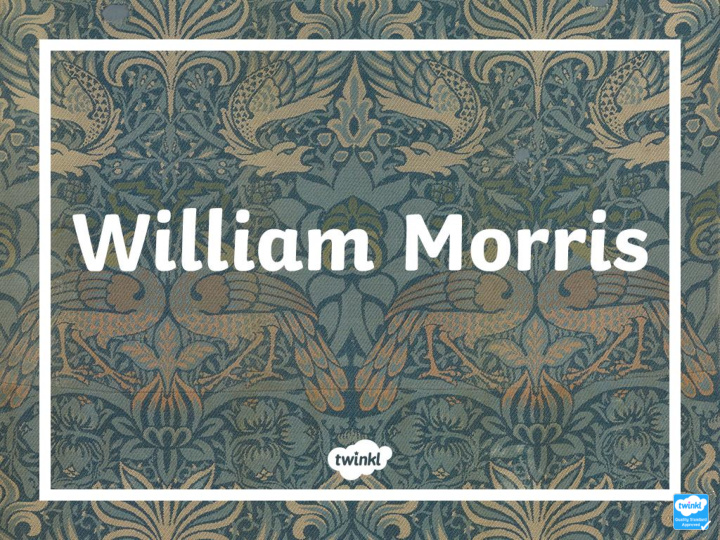



Aim • To understand who William Morris was. To recognise examples of William Morris patterns. •
William Morris ‘Have nothing in your house that you do not know to be useful, or believe to be beautiful.’ - William Morris
Who Was William Morris William Morris was born on 24th March, 1834. He was the son of a wealthy business man. He originally was going to become a priest but decided to devote his life to art instead. He became a poet, artist and manufacturer. He had lots of friends who were writers, poets and artists. His career in designing started when he decorated his own house in London.
Who Was William Morris He made stained glass windows…
Who Was William Morris He made patterned wallpaper…
Who Was William Morris He made tapestries…
William Morris – The Style William Morris is very famous for The Victorian era was the era of his wallpaper designs. He created industrialisation; factories were some beautiful designs, the likes of being built in the cities in Britain, especially London. People flocked to which had never been used before. In fact, wallpaper before his day the cities to work in these factories was quite plain. or run them, and the cities grew bigger and bigger. As a result, people led more urban lifestyles and grew to miss the countryside. Wealthier people did have gardens, but still, it was desirable to feel closer to nature. William Morris, who was also an environmental campaigner, created designs of floral patterns (patterns inspired by flowers and plants) which were repeated many times by block printing.
William Morris – The Technique What William Morris did was to make designs of floral patterns (patterns inspired by flowers and plants) that could be repeated many times by block printing techniques on large pieces of paper to make patterned wallpaper. “ Machine Typographique Ghande Dimension ” is licensed under CC BY 2.0 This process was later improved through advances in technology, using printing machines and synthetic coloured inks.
An Influential Artist “Windrush” 1881 -1883
An Influential Artist “Tulip and Willow” 1873
An Influential Artist “African Marigold” 1876
An Influential Artist “Trellis” 1876
An Influential Artist “Daisy” 1864
An Influential Artist “Acanthus” 1875
An Influential Artist “Strawberry Thief” 1883
An Influential Artist “Peacock and Dragon” 1878
Recommend
More recommend